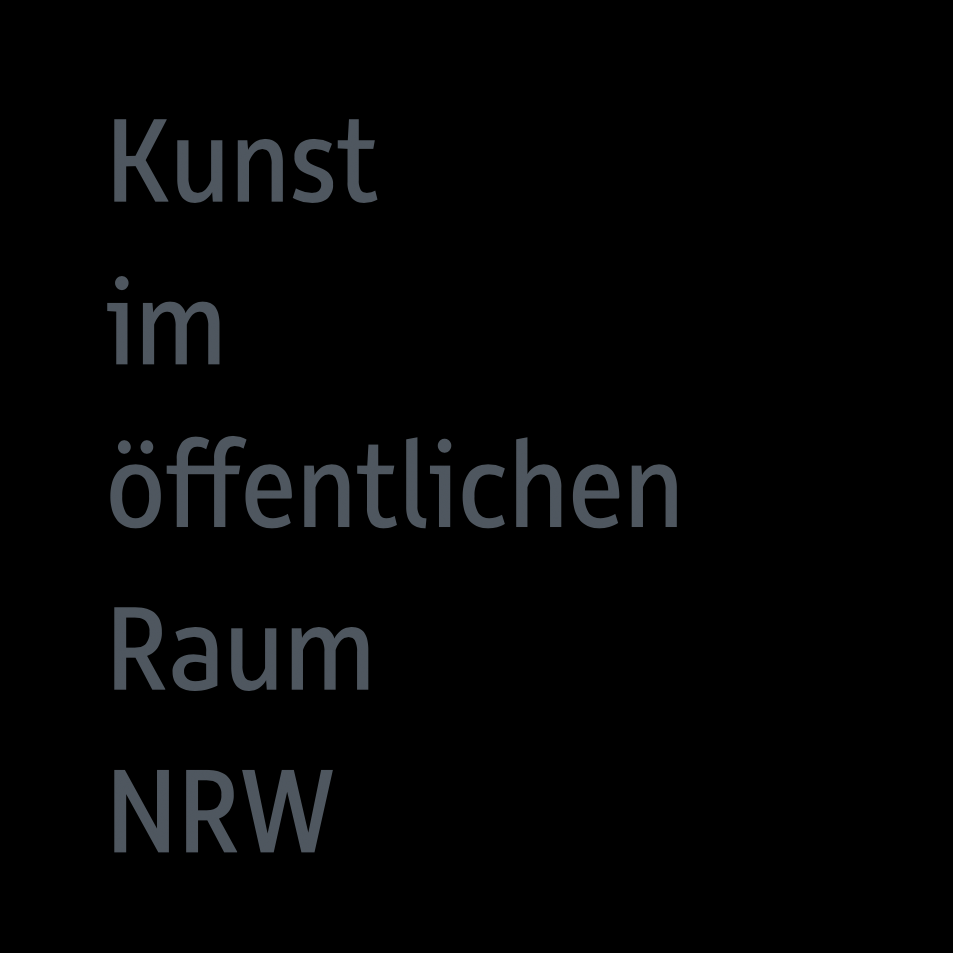Weitmar
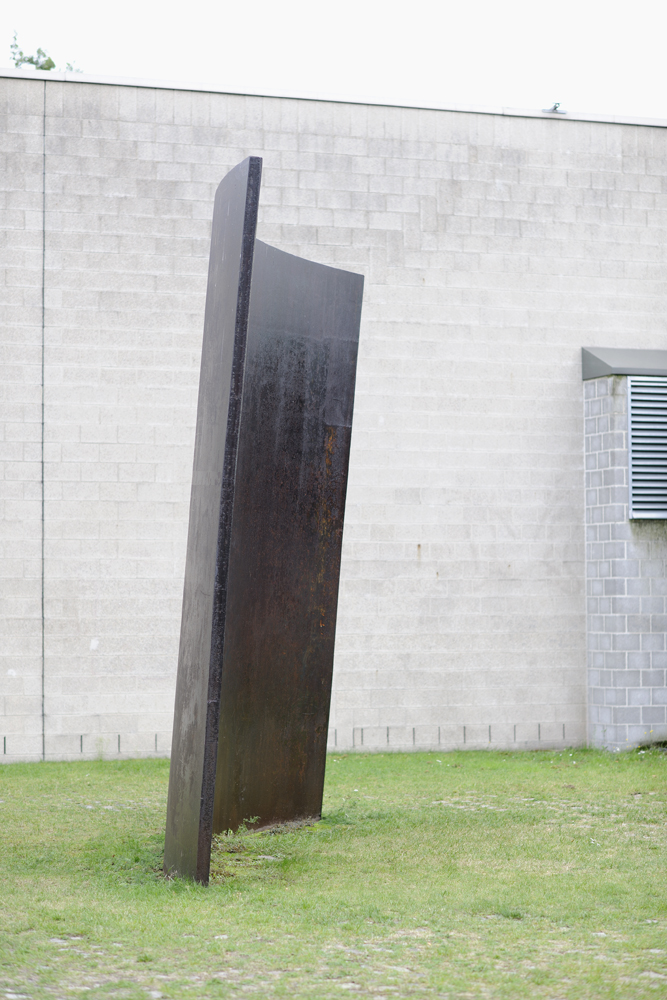
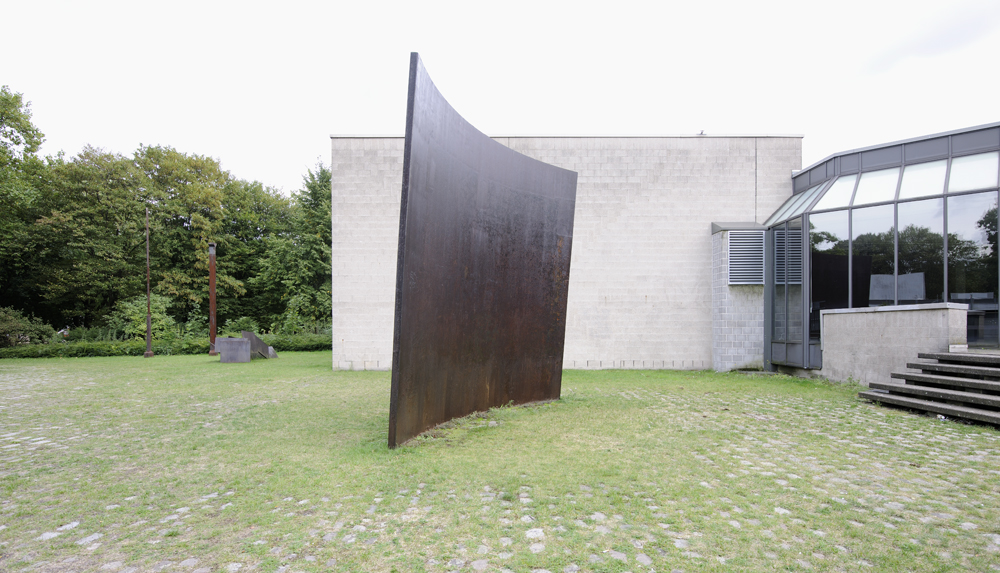
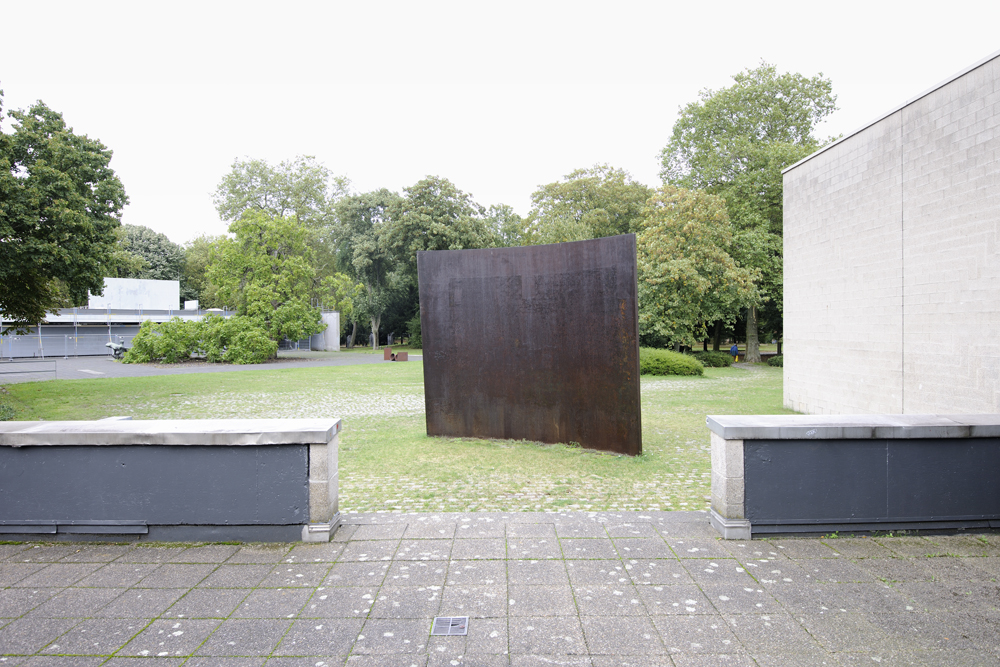
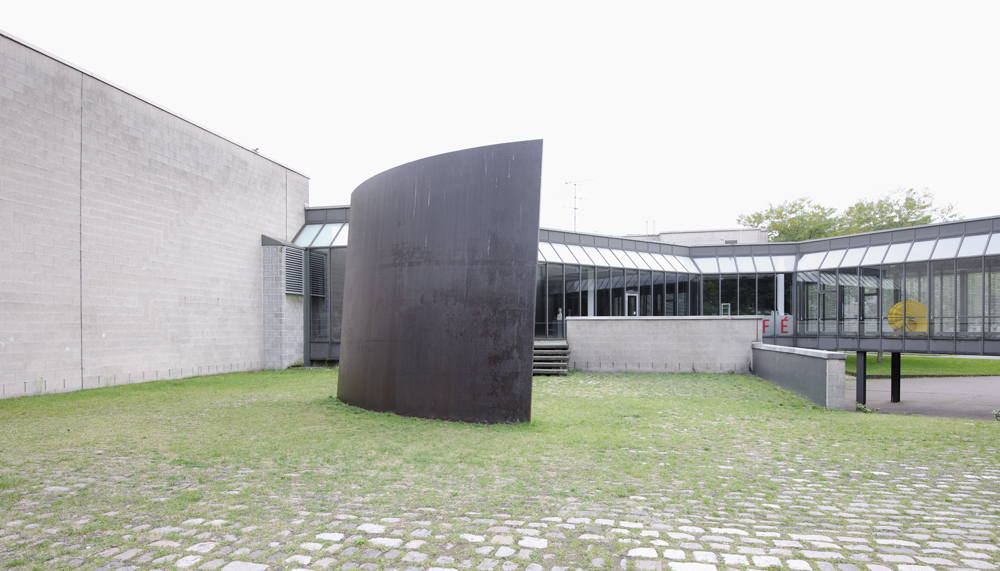
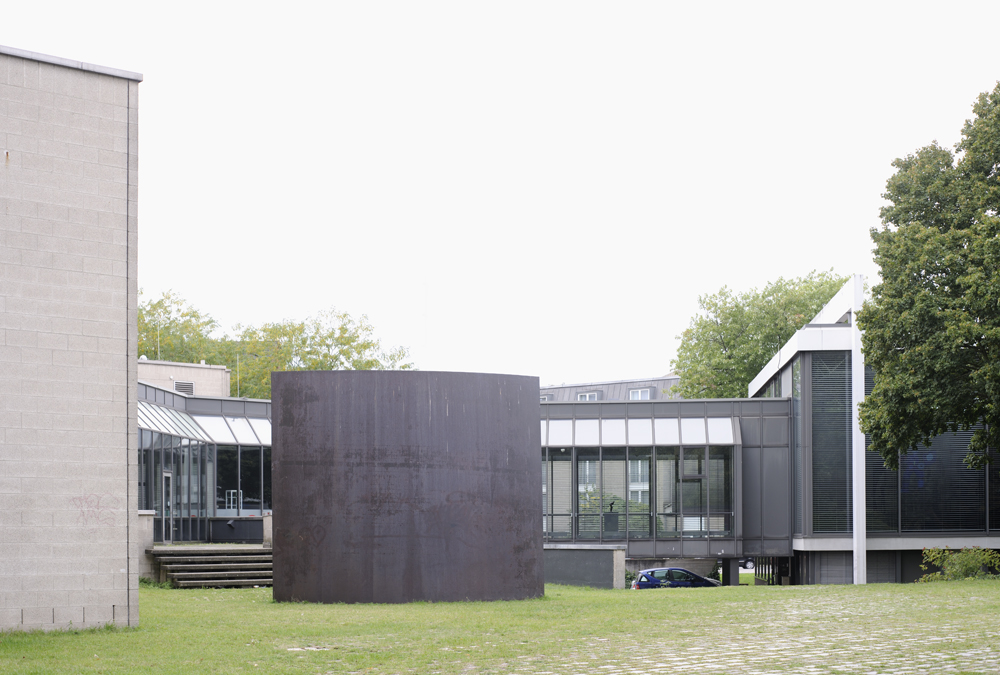
One of Richard Serra’s characteristic sculptures is located in Kant Park at the Lehmbruck Museum. The massive, slightly bent rectangular plate is made of hot-rolled steel and installed upright at a slant in front of the museum building.
With its rust-brown color, materiality, and orientation, the work stands in complete contrast to the building. This corresponds to Serra’s method of working. He often inserts contradictory elements into a public space, intentionally disrupting the pleasant aesthetic, while also obstructing familiar lines of sight. As such, they evoke corresponding reactions from the public, as well as a newly sharped awareness.
Richard Serra
1939
geboren in San Francisco.
1957–1964
Studium an der University of California in Berkeley und Santa Barbara sowie der Yale University in New Haven/Connecticut. Abschluss als Bachelor of Arts und Master of Arts.
1964–1966
Studienaufenthalte in Paris und Florenz.
1969
Austellung im Guggenheim Museum in New York.
1972
Auststellung auf der documentca 5 in Kassel.
1977
entsteht in der Henrichshütte in Hattingen "Berlin Block for Charlie Chaplin" für die Neue Nationalgalerie in Berlin.
1979–1989
Realisierung und Aufstellung von Großplastiken in New York, Paris, Barcelona, Madrid, Berlin, München, Otterlo, Bielefeld, Bochum, Reykjavik, Washington und vielen anderen Orten.
1991
Richard Serra erhält in Duisburg den Wilhelm-Lehmbruck-Preis für Skulptur.
1998
Realisierung der "Lemgo Vectors" und der "Bramme" auf der Schurenbachhalde in Essen.
Bis heute realisiert Richard Serra Projekte in der ganzen Welt und gehört zu den bekanntesten Bildhauern der Gegenwart.
Quelle:
Images:
Photos © Carsten Gliese
← Zur Startseite
Location
Duisburg
Duisburg, Lehmbruck Museum/Kant-Park, Friedrich-Wilhelm-Straße 40
Duisburg, Lehmbruck Museum/Kant-Park, Friedrich-Wilhelm-Straße 40
Artist
Richard Serra
Year
1984
Size
450 x 500 x 8 cm
Material
Corten steel, hot rolled and curved
